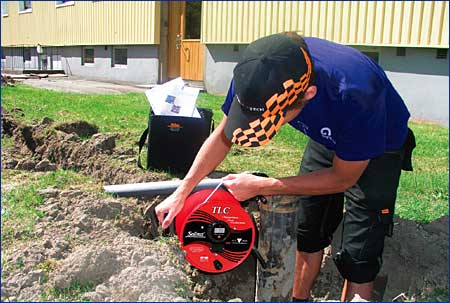 |
|
| Sweden is a country with a lot of coastal area and has groundwater as the major fresh water source. Therefore, it has become extremely important to monitor any drilled holes for potential saltwater intrusion. For over 20 years, drillers in Sweden have been searching for geothermal heat to use as an alternative energy source. In 2006 there were over 50,000 boreholes drilled for fresh water and geothermal heat investigations. Saltwater intrusion, the induced flow of seawater into fresh water aquifers, is caused by groundwater development near the coast. Often it results in water being unusable for drinking, agriculture or industry. In order to regulate and monitor the situation, the Geological Survey of Sweden has developed a guideline for all drillers to adopt, Normbrunn 07. Normbrunn 07 requires drillers to record the chloride content (conductivity) of water at a number of different levels in each drilled hole, along with the elevation of the water in the borehole. | If a heightened chloride content is discovered (greater than 50 mg/L or 500 µS/cm), the driller has to seal the intrusion area or seal the entire borehole with bentonite and abandon the drilling location. David Haag, of Geawelltech, Solinst distributor and manufacturer of drilling equipment and accessories in Sweden, sees the Solinst Model 107 TLC Meter as a perfect tool for meeting these requirements. He notes the following advantages:
The Solinst TLC Meter provides an all-in-one tool, allowing the drillers to more easily meet their requirements while maintaining efficiency and productivity. |
Acknowledgement: Solinst would like thank David Haag of Geawelltech for providing background information for this article.
